Pete Townshend The Studio Albums - An Overview
Another box, hard on the heels of the collected live albums.
If you’re reading this as an email, it may be truncated. There’s an app, of course …
It’s Pete Townshend’s turn for the boxed set treatment. To follow his collected live albums (I wrote about those here) we now have the studio albums. Eight albums, ranging from elaborate demos, across folk rock, a musical, and a couple only one step removed from The Who. Not that Townshend knows much about this release:
“When I put this box set out … well, that’s a fuckin’ joke, because I didn’t put this set out. I didn’t even know it was coming out until about four weeks ago. I sold my solo deal material to Universal, and they’re just cashing in. They’re trying to recoup on their investment. I bought a boat, they’re buying a solo deal.”
Interview with Andy Greene, Rolling Stone, 26 March 2025
I’ve owned three copies of Pete Townshend’s oddly titled album All the Best Cowboys Have Chinese Eyes. One was the standard issue album released on vinyl in 1982. Another was the same album, but on CD. The third was a copy signed “Hooray! Pete Townshend.” This was in response to a letter requesting a donation to a local Sport Aid event, continuing the spirit of Live Aid and organised by my friend Matt. The whole point was to raise money for charity so to own it I had to win an auction - a real life one, this was the age before eBay, because it was before the internet.
Of the other seven albums, I’ve only ever owned one copy. The album Psychoderelict is included twice in this box, though, one with narration and one without; I’ve never owned a copy of the narrationless version, although I wish I had because I find the narration gets in the way of the music. Psychoderelict is a musical play with links to Lifehouse, The Who’s album Endless Wire (2006), Townshend’s book ‘The Age of Anxiety’ and more.
John Entwistle made his first solo record in 1971. Roger Daltrey did his in 1973. Keith Moon followed in 1974. You didn’t do a proper one until 1980. Why were you the last?
“Because I was writing the songs for the fuckin’ Who, that’s why!”
(Interview with Andy Greene, Rolling Stone, 26 March 2025)
Townshend writes the majority of The Who’s songs. So that must mean his solo albums contain the offcuts, the songs not good enough for the band, the songs in a different style and so of little interest to a Who fan. Right? Wrong. Mostly wrong.
These solo albums have a symbiotic relationship with The Who. They include tracks that could have been Who songs but never were; not because the quality of writing was below par, but because Daltrey didn’t want to sing them, or because a producer didn’t think they were right for a Who album. Why make solo albums at all? Because Townshend is a restless creative, and because when he got a solo deal, it was when overwork and deadlines were affecting his mental health. The obvious solution? More work! There’s a saying: If you want something done, ask a busy person to do it. Well, yes, but there are limits.
His solo career got off to something of a false start. In the late 60s, Townshend began a spiritual practice and his guru was Maher Baba. Being a musician, he couldn’t help but express his spirituality through songs. He contributed to two limited edition albums for distribution through the Maher Baba foundation, Happy Birthday and I Am. Could Townshend have a life away from The Who?
Rock stars' lives don’t work like that; and in the early 1970s, Townshend was at the beginning of his status as a massive rock star. Who’s Next (essay) was released in the previous year, and the Lifehouse project was still alive in his mind if not out in the wider world. Followers bootlegged the album, leading Townshend to the conclusion that if they wanted a solo album he might as well make one. The result was Who Came First, (nice ambiguous title) a mostly acoustic album with its roots audibly in Townshend’s legendary complete demos.
It’s not a coherent album. Alongside the reworkings of Who’s Next/Lifehouse songs (‘Pure and Easy’, ‘Let’s See Action’ and ‘Time is Passing’) there are songs from Happy Birthday - Townshend’s own ‘Content’ and Ronnie Lane’s ‘Evolution’; and from the second tribute album, ‘Forever’s No Time At All’ by Billy Nicholls, and Townshend’s adapted prayer ‘Parvardigar’.
But what’s this? “I’m sitting in the Sheraton Gibson playing my Gibson.” Here’s a new Townshend song that could make a Who album.
To add to the variety there’s a song by Jim Reeves, one of Maher Baba’s favourites, called ‘There’s a Heartache Following Me’. Who Came First was never intended to launch a Townshend solo career. Nor, really, was the next.
Ronnie Lane of the Faces was also a follower of Meher Baba. Townshend was enlisted to produce Lane’s solo album, but it became a collaboration of sorts (the only co-written song is the instrumental title track). Rough Mix (1977) was, again, a collection of acoustic folk rock songs, giving Townshend a different creative outlet and offering Lane a route away from The Faces to form Slim Chance. Rough Mix works as an album because Townshend and Lane’s styles blend well. It’s a relaxed but never soporific piece of work.
And then the rockets fired on Townshend’s approach to his solo work. He was continuing to struggle with personal and mental issues, themes raised in The Who’s 1975 album By Numbers (essay), and in the Who song ‘Who Are You’ (1978). He was questioning his place in rock as he aged into his 30s (!) with the advent of punk and new wave. So, onward. A solo contract was signed, and the first fruit was Empty Glass (1980). Many of these songs could have been on the next Who album, Face Dances (1981), but The Who’s future was in question after the passing of Keith Moon. Townshend wanted to establish his own identity, beyond that of spiritual folk-rocker and windmilling amps turned up to eleven Who guitarist.
Chinese Eyes (1982) was next, including the mighty ‘The Sea Refuses No River’. This time the critics turned on Townshend. He dared to use words of several syllables. This ain’t rock ‘n’ roll, this is … poetry? No matter, the album has always sounded alive and musical to me.
The box is competed with White City: A Novel (1985) (essay); Iron Man: The Musical (1989), featuring guests such as Nina Simone and John Lee Hooker. This one earned another critical panning yet it’s a life-affirming slice of joy to me, and it really did have life as a stage and screen musical.
Every album in this box has songs of note and makes a significant contribution to the story of Pete Townshend, with and without The Who. As he approaches his 80th birthday, he’s saying he has ten years left as a creative. It’s 22 years since the previous solo album. There could be more to come, just not a second boxed set, not another yacht.
My Pete Townshend series will also include his Scoop albums - collections of his home demos, and other odds ‘n’ sods.
Pete Townshend - Live in Concert 1985-2001
I previously wrote about Pete Townshend, with and without The Who, in these posts: White City | Who’s Next | The Who By Numbers
Next in LP: a new playlist, due next weekend. Subscribe now to ensure you receive every new playlist and each new essay.
LP is evolving to include the music of artists and bands across their collected albums, in a series of linked essays. Phil Collins is first, followed by Pete Townshend. I’ll continue to post individual essays across a range of artists and genres, too, so there’s not too much of anything.


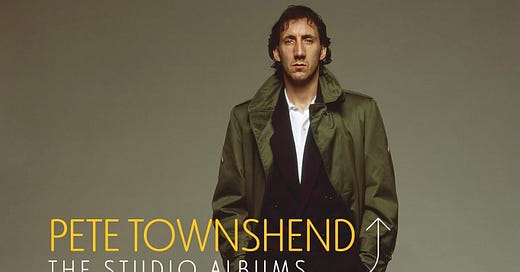


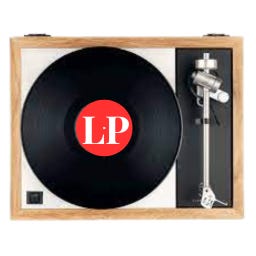


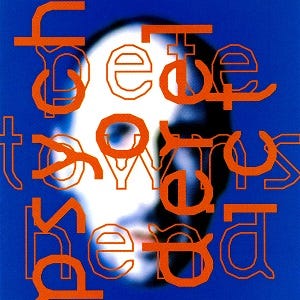
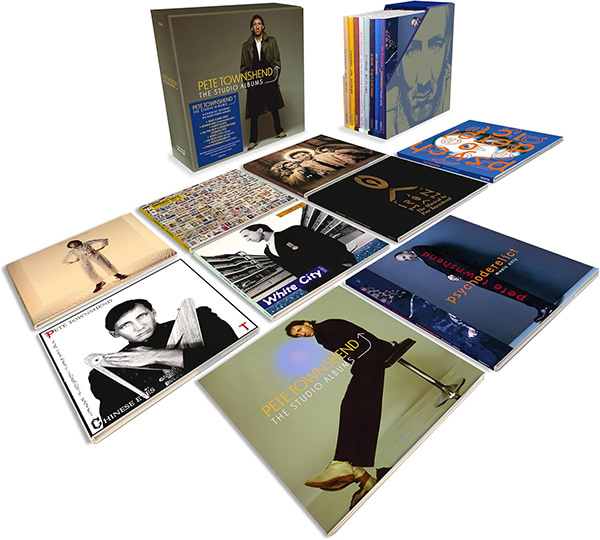
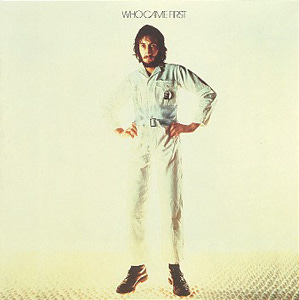
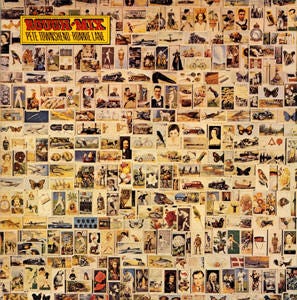
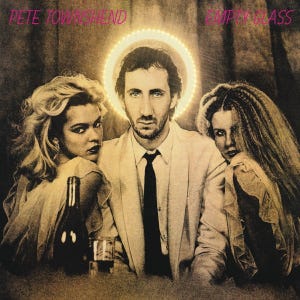
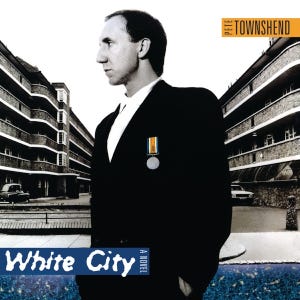
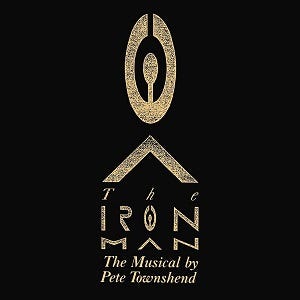
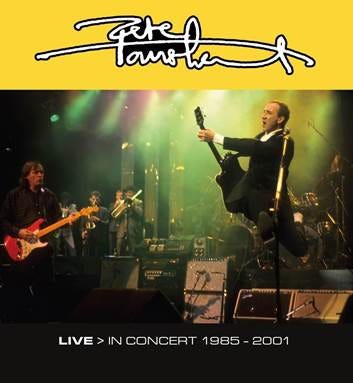
Chines Eyes is fantastic. Ditto Empty Glass. But my fave is the Ronnie Lane collaboration.
I enjoy his solo records very much.